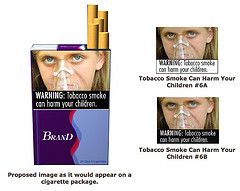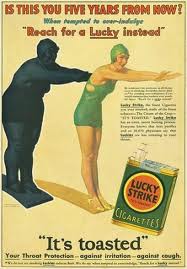 Current cigarette smokers have a higher risk of bladder cancer than previously reported, and the risk in women is now comparable to that in men, according to a study by scientists from the National Cancer Institute (NCI) . This latest study uses data from over 450,000 participants in the NIH-AARP Diet and Health Study, a questionnaire-based study that was initiated in 1995, with follow-up through the end of 2006.
Current cigarette smokers have a higher risk of bladder cancer than previously reported, and the risk in women is now comparable to that in men, according to a study by scientists from the National Cancer Institute (NCI) . This latest study uses data from over 450,000 participants in the NIH-AARP Diet and Health Study, a questionnaire-based study that was initiated in 1995, with follow-up through the end of 2006.
While previous studies showed that only 20 to 30 percent of bladder cancer cases in women were caused by smoking, these new data indicate that smoking is responsible for about half of female bladder cancer cases – similar to the proportion found in men in current and previous studies. The increase in the proportion of smoking-attributable bladder cancer cases among women may be a result of the increased prevalence of smoking by women, so that men and women are about equally likely to smoke, as observed in the current study and in the U.S. population overall, according to surveillance by the CDC. The majority of the earlier studies were conducted at time periods or in geographic regions where smoking was much less common among women.
The researchers found that the amount of risk brought on by smoking, called excess risk, was higher in this study than in previously reported. “Current smokers in our study had a fourfold excess risk of developing bladder cancer, compared to a threefold excess risk in previous studies. The stronger association between smoking and bladder cancer is possibly due to changes in cigarette composition or smoking habits over the years,” said study author Neal Freedman, Ph.D., in NCI’s Division of Cancer Epidemiology and Genetics (DCEG). “Incidence rates of bladder cancer in the United States have been relatively stable over the past 30 years, despite the fact that smoking rates have decreased overall. The higher risk, as compared to studies reported in the mid-to-late 1990s, may explain why bladder cancer rates haven’t declined.”
Although there have been reductions in the concentrations of tar and nicotine in cigarette smoke, there have been apparent increases in the concentrations of certain carcinogens associated with bladder cancer. A 2009 NCI/DCEG study was the first to suggest a higher risk for smoking-induced bladder cancer than previously reported. That report, based on data from the New England Bladder Cancer Study, found that the association between cigarette smoking and risk of bladder cancer appeared to be stronger than it was in the mid-1990s. The results of the new study confirm the 2009 report.
In the current study, former smokers were twice as likely to develop bladder cancer as never smokers, and current smokers were four times more likely than those who never smoked. As with many other smoking-related cancers, smoking cessation was associated with reduced bladder cancer risk. Participants who had been smoke-free for at least 10 years had a lower incidence of bladder cancer compared to those who quit for shorter periods of time or who still smoked.
“Our findings provide additional evidence of the importance of preventing smoking initiation and promoting cessation for both men and women,” said senior author Christian Abnet, Ph.D., also from DCEG. “Although the prevalence of cigarette smoking has declined, about 20 percent of the U.S. adult population continues to smoke.”
Even though smoking carries the same risk for men and women, men are still about four times more likely to be diagnosed with bladder cancer. These results, as well as those from previous studies, suggest that difference in smoking rates explain only part of the higher incidence rates in American men. The researchers suggest that occupational exposures, as well as physiologic differences, may contribute to the gender disparity.
In 2011, approximately 69,250 people will be diagnosed with bladder cancer in the United States, and 14,990 will die from the disease.
The report was published on Aug. 16, 2011, in the Journal of the American Medical Association.

 Federal regulators are testing the waters with the first proposed changes to cigarette packaging and advertisements in more than 25 years—bold health warnings with color images that show the tragic consequences of smoking.
Federal regulators are testing the waters with the first proposed changes to cigarette packaging and advertisements in more than 25 years—bold health warnings with color images that show the tragic consequences of smoking. To view the warning labels, go to:
To view the warning labels, go to: 
 Today,more than 200 health professionals attended the
Today,more than 200 health professionals attended the